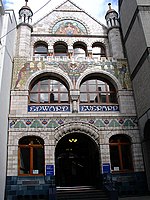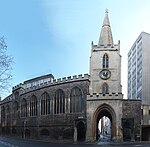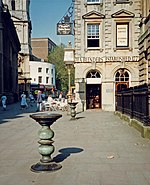Bristol Crown Court
Court buildings in EnglandCrown Court buildingsGovernment buildings completed in 1868Grade II* listed buildings in BristolUse British English from January 2023

The Bristol Crown Court is a Crown Court venue which deals with criminal cases at Small Street in Bristol, England. The building, which was completed in 1868, was previously used as a main post office before it was converted for judicial use in the early 1990s.
Excerpt from the Wikipedia article Bristol Crown Court (License: CC BY-SA 3.0, Authors, Images).Bristol Crown Court
Small Street, Bristol City Centre
Geographical coordinates (GPS) Address External links Nearby Places Show on map
Geographical coordinates (GPS)
| Latitude | Longitude |
|---|---|
| N 51.4548 ° | E -2.5949 ° |
Address
Bristol Crown Court
Small Street
BS1 1DA Bristol, City Centre
England, United Kingdom
Open on Google Maps











